






Operated in support of the Kenya Wildlife Service, Sheldrick Wildlife Trust's Aerial Unit monitors for illegal activity from the skies and offers rapid response assistance in anti-poaching operations, human-wildlife con�ict, veterinary treatments, orphan rescues, and all manner of �eld emergencies.
This report details Aerial Unit activities for September 2024
27,678
175 Hours �own:
23,077
Kilometres �own: Tsavo East, Tsavo West, Chyulu Hills NP, Arabuko Sokoke Forest, Kulalu Ranch, Galana Ranch, Kuranze Ranch, Kishushe Ranch Areas patrolled:
By far the most troubling development in recent months which came to a head in September is the increasing number of elephants stuck in man-made dams and wells During the month, a total of 14 elephants were rescued with help from our Aerial Unit With deep, slippery sides, these hand-dug wells and dams can quickly become a lethal trap In most cases, support involved �ying personnel, water pumps, and other equipment to remote areas outside of the parks to coordinate and facilitate the rescue of stuck elephants.
In the most dramatic case, our team hired an excavator, which did not arrive on the scene until 10pm. It was not until shortly after 2am the next day that the elephants were successfully freed from their predicament. The youngest among them would have surely drowned if not for this timely intervention.
Another urgent case involved a very young elephant calf who got stuck in a well on Chakama Ranch and was abandoned by his family. Local herders discovered him inside the well and reported their �nding to KWS. Rangers extracted the days-old elephant while the SWT helicopter �ew to the scene They little calf was brought to the SWT Kaluku Unit for further care
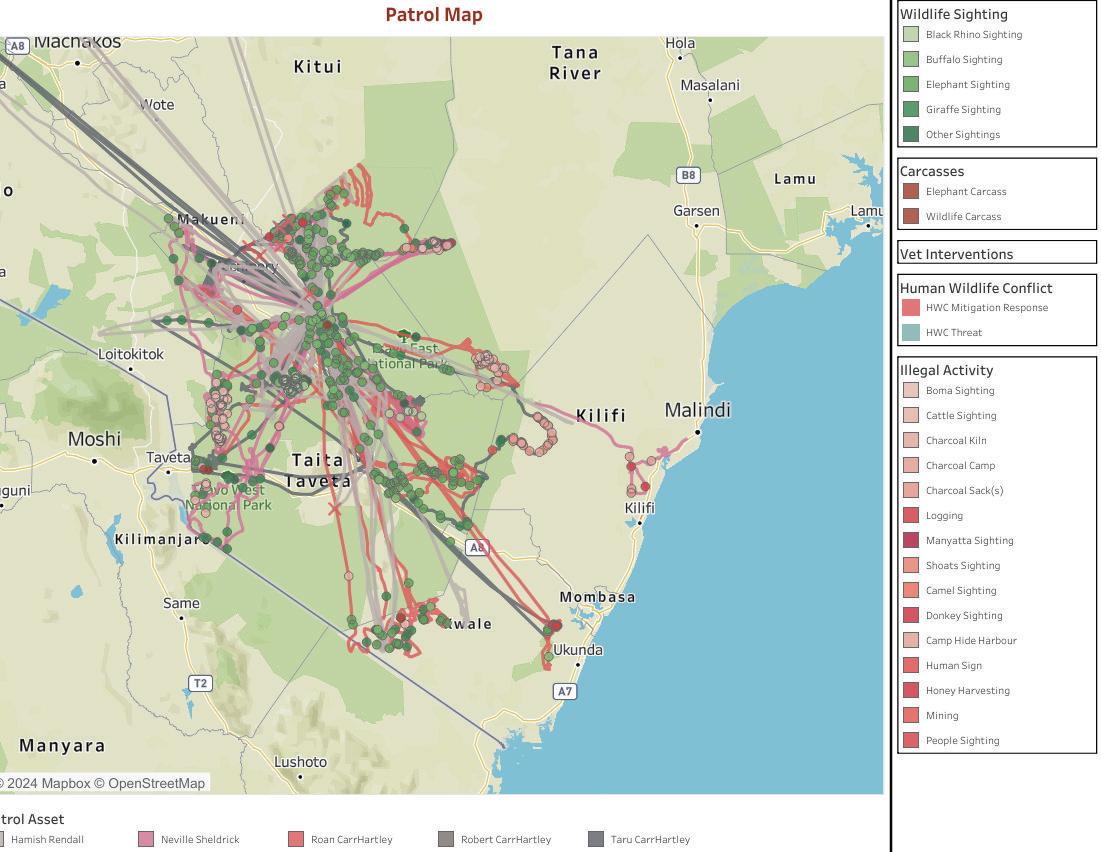
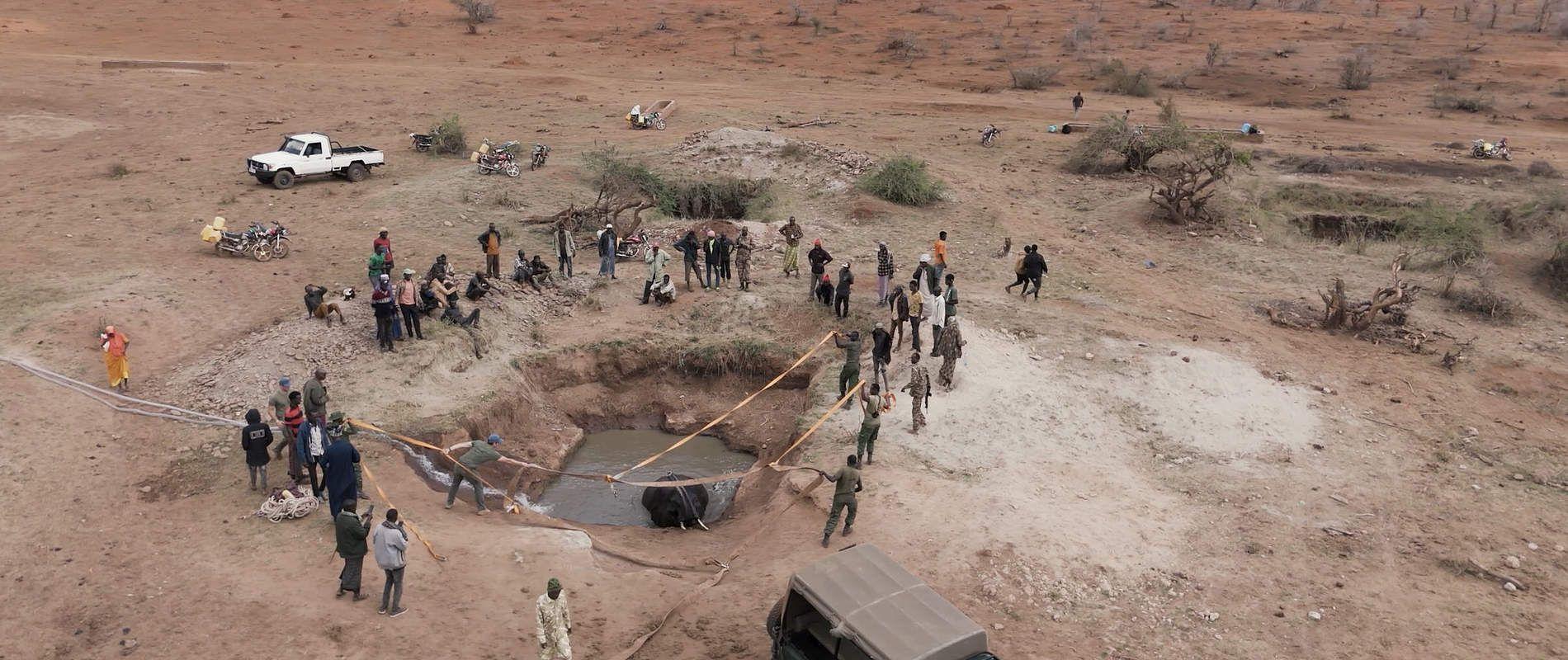



A further three orphaned baby elephants were also rescued in September, either abandoned or orphaned. The �rst of these was a 1- to 2-year-old calf �rst spotted during a routine �xed-wing patrol. She was standing alone next to the Tiva River, in visibly poor condition After con�rming the absence of any other elephants in the area and given that the orphan was showing signs of malnourishment, a rescue was coordinated A ground team arrived by vehicle and assisted with the capture, while the SWT helicopter airlifted the calf to our Nairobi Nursery.
Another baby elephant was severely mauled by multiple lion attacks He was still with his herd, but would have died without extensive veterinary intervention. The dif�cult call was made by Dr Limo of the KWS/SWT Tsavo Mobile Vet Unit to rescue the calf so that he could be given more dedicated and continued care. This calf was also airlifted to the Nairobi Nursery by helicopter Sadly, despite the team's best efforts, he succumbed to his injuries several weeks later
Finally, a newborn elephant fell off a large cliff on the edge of the Yatta Plateau and was irretrievably separated from his mother. Despite this very sad event, a SWT/KWS Anti-Poaching Team fortunately discovered him during a routine foot patrol He was bruised and in desperate need of milk, but lucky to survive such a fall A SWT helicopter airlift the little baby to our Kaluku Unitfor care.
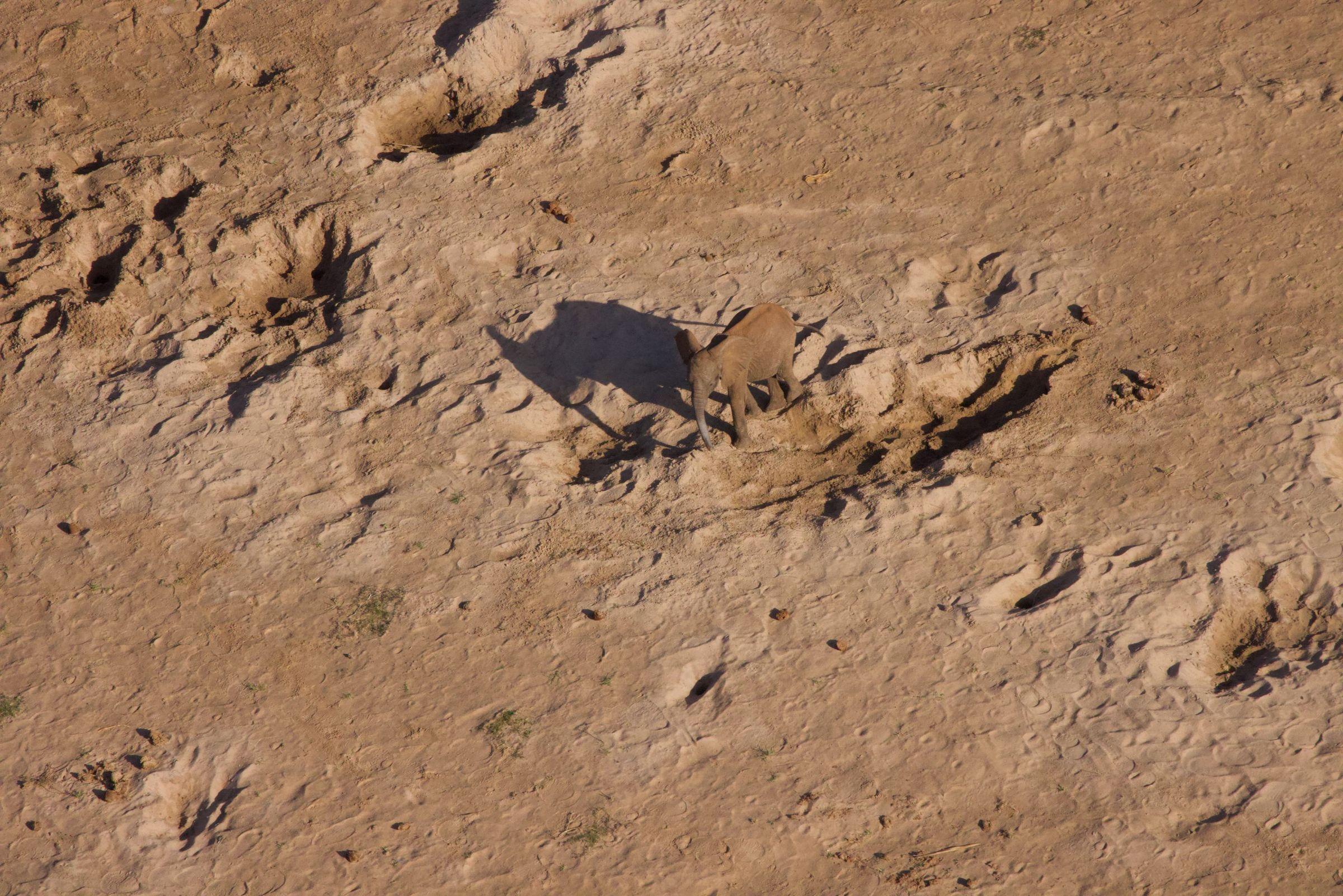


In September, the Aerial Unit supported nine veterinary interventions, including two lions and seven elephants. The �rst lion was reported with a snare around his neck near Ol Donyo Lodge in the Chyulu Hills. He was successfully darted with helicopter assistance and the snare removed The second lion was reported on Kuku Ranch near Kimana
The KWS/SWT Tsavo Mobile Vet team was collected from Voi and �own to the site in a helicopter Unfortunately, the lion died while the team was enroute. During a postmortem, it was discovered that the cause of death was not in fact poisoning, but a gastric torsion (twisted gut) a natural occurrence.
Of the elephants attended, four had arrow wounds or suspected arrow wounds. One was a re-treatment, one was an old arrow injury, and two were new arrow injuries. A decision was made to monitor the other elephant rather than treat it, because the wound appeared not to be severe enough to warrant darting
Two other elephants were treated: The KWS/SWT Amboseli Vet requested aerial assistance in darting a bull elephant with a spear wound. He was in an area with thick vegetation, which made an approach on the ground too dangerous. Another bull was successfully treated for �ght wounds
Another case, which ultimately did not result in a treatment, was of a young adult elephant near Ngutuni with a suspected broken leg The bull, who had been �agged before, was spotted by a SWT �xed-wing pilot Unfortunately, no veterinary intervention would be possible in a wild setting However, there is cause for optimism: Dr Limo suspects that the broken leg has already healed in its deformed state.
The �nal case was of a known 'problem bull' who consistently breaks out of the park and is found in settled areas along the boundary The local community reported sightings of a limping bull near a school He was later located by a helicopter. After con�rming the injury, the SWT/KWS Tsavo Mobile Vet Unit was collected and �own to Kaluku, where he proceeded by helicopter to dart and treat the bull. After treatment, the SWT helicopter helped push him back into the protection of the park

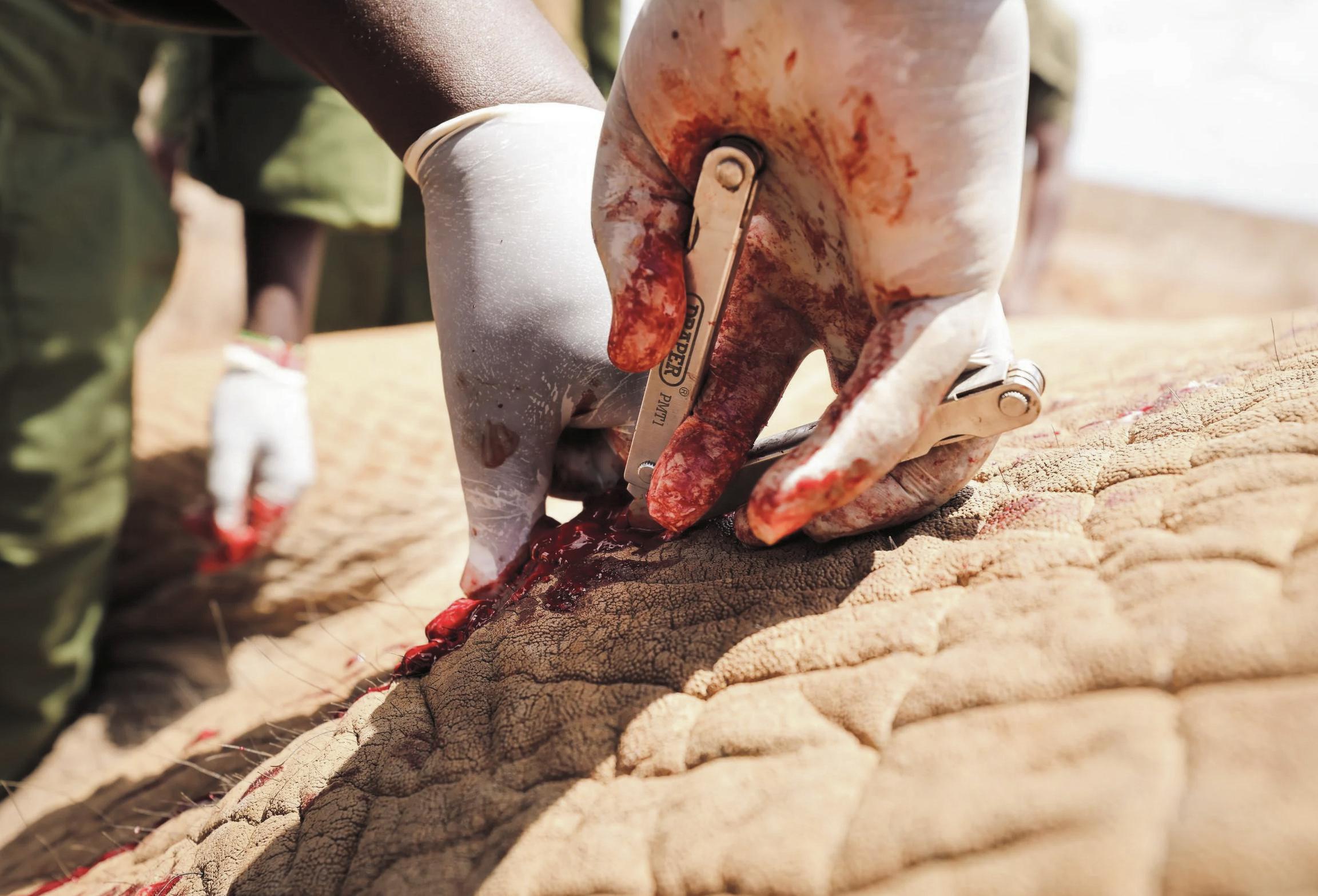
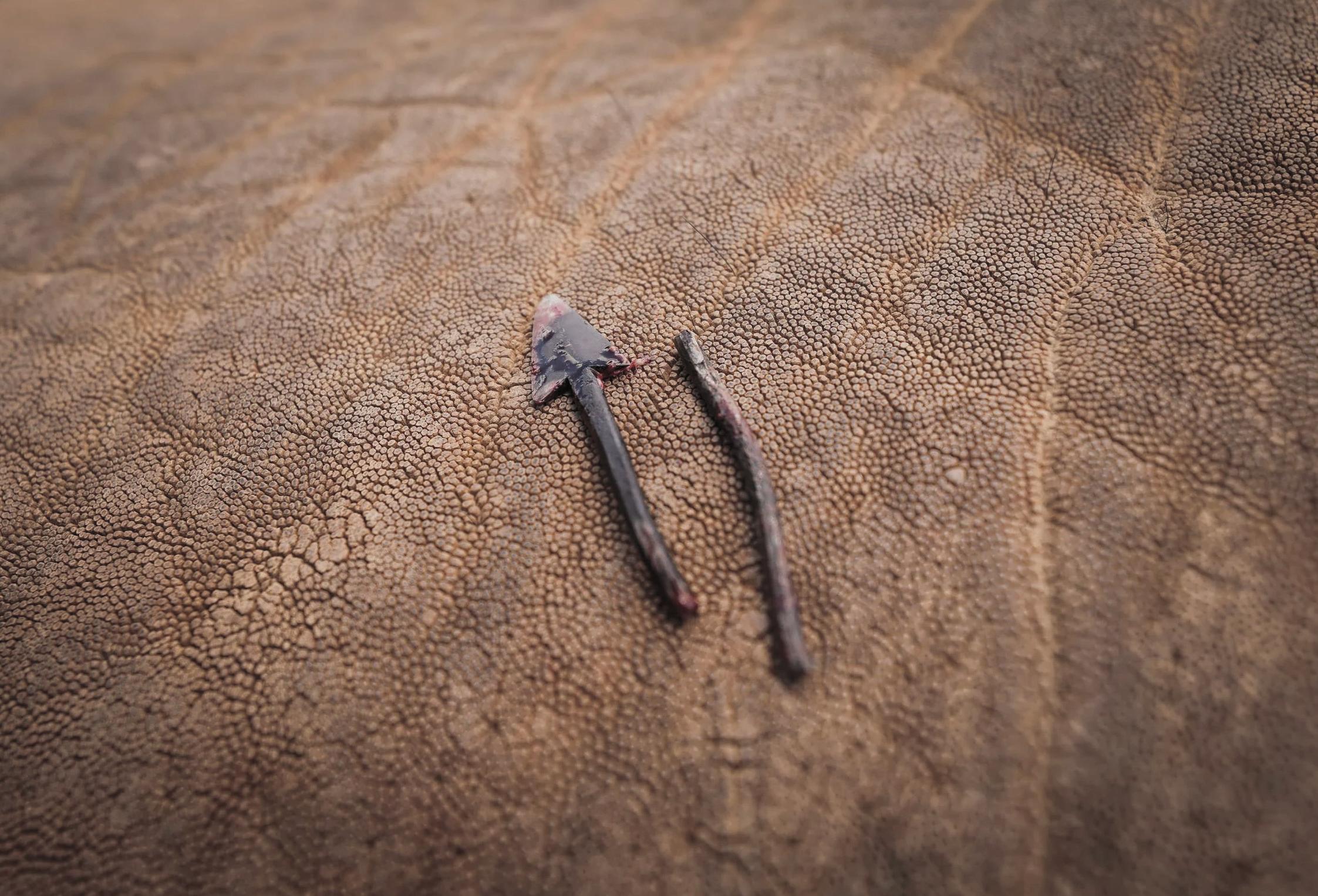

In addition to the previous human-elephant con�ict callout, a further seven callouts were responded. Most of these consisted of small groups of 1-4 bull elephants, all of whom were pushed back into the park with the helicopter. The exception was one lone bull who refused to be moved
There was also one large group of 24 bull elephants who had taken up residence in a piece of undeveloped land surrounded by heavily settled farmland between Kibwezi town and the Athi River. Due to the dif�culty in safely pushing such a large group of elephants through settled areas, they were pushed to a small thicket in the right direction, with the hope that they would continue the journey back into the park under cover of darkness. Follow-up surveillance con�rmed that this happened, and ten days later, just one small group of �ve bulls remained in the area.
Only two poaching-related incidents were recorded by the Aerial Unit in September The �rst was a suspected poachers’ camp with a �replace, which was spotted during an aerial patrol. Ground teams responded to the sighting and dismantled the camp. The second incident were giraffe carcasses which were sighted by pilots. Ground teams inspected the carcasses and con�rmed that they were, in fact, poached Two elephant carcasses were also discovered in September. However, both were old carcasses and presumed to be natural deaths, due to the presence of ivory. In both cases, the ivory was recovered and handed over to KWS for safekeeping.
Fire season continued in September, with over a dozen �res recorded throughout the month The Aerial Unit supported �re�ghting efforts from the sky on three occasions. The largest �re in September burned for a total of four days and affected a total of 15,000 acres in Chyulu Hills National Park, with an estimated 13,500 acres between patches of mature forest, which resisted the �re A further 5,000+ acres were burnt elsewhere in Tsavo East, Tsavo West, and KARI Ranch
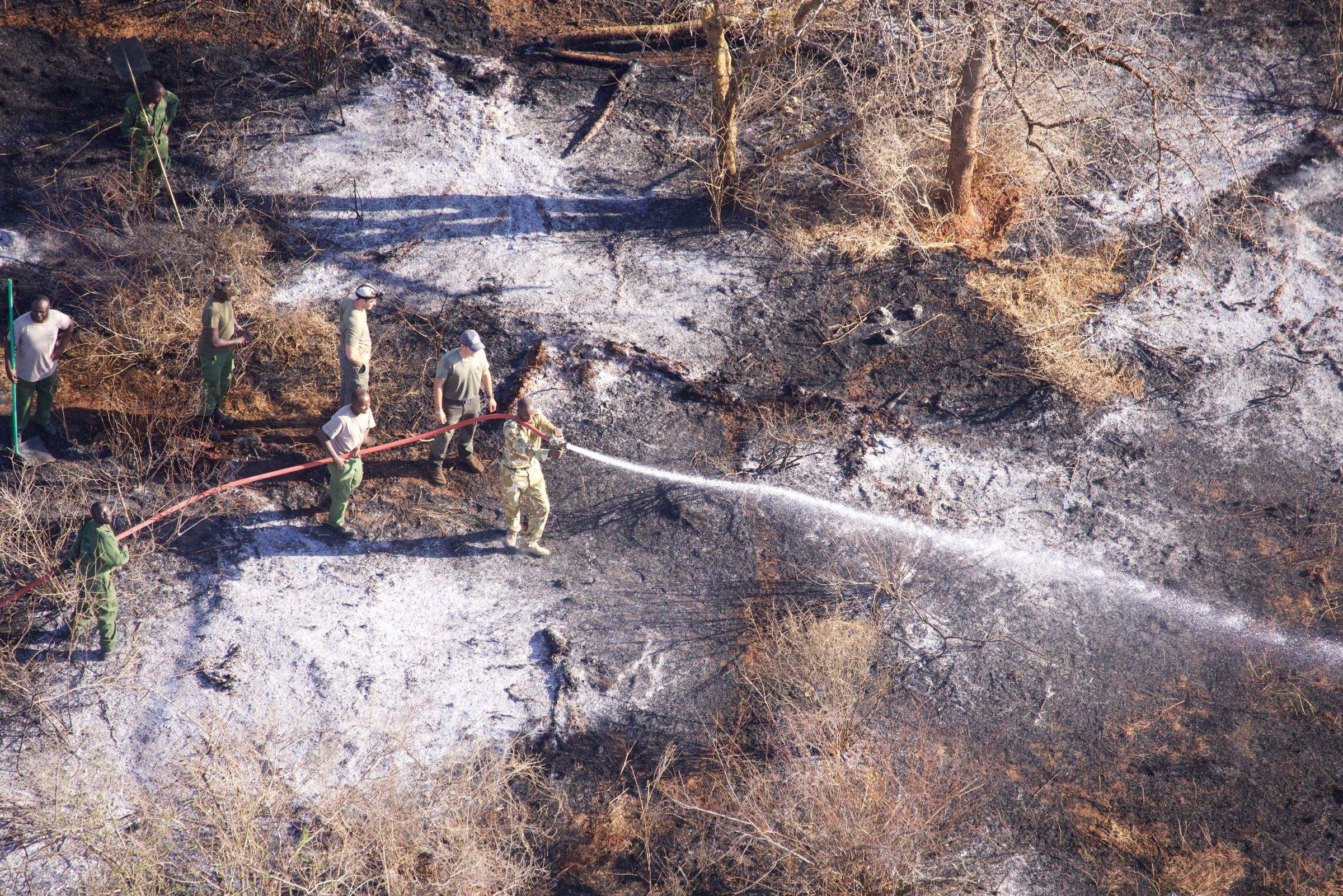

Some highlight aerial observations from the month included notable rhino sightings of individuals who have not been seen by rangers or other pilots for several months. There were also special sightings of leopard, wild dog and striped hyenas

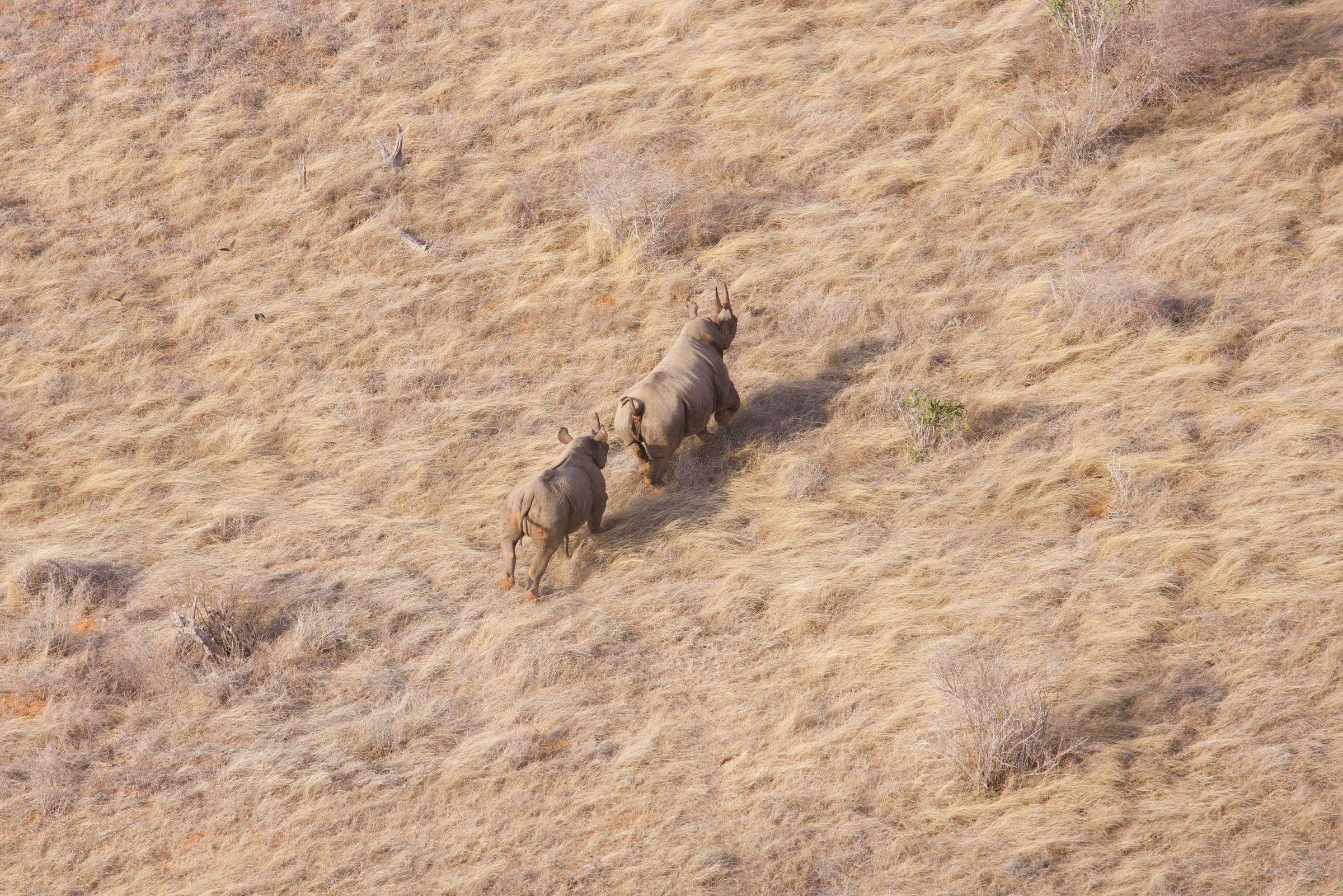

The Aerial Unit, as with all Sheldrick Wildlife Trust's conservation projects, is a donorfunded initiative Thank you to our global supporters, who help us secure Kenya's habitats for the future and make an impact in the �eld, each and every day